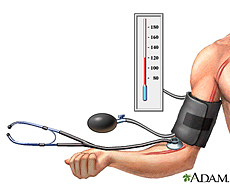

Fountain Valley Urgent Care Permanently Closed. We’re Here to Care for You at Our Other Locations.

February is American Heart Month, raising awareness for the leading cause of death in Americans: heart disease. And a big part of prevention is knowing and maintaining your blood pressure.
High blood pressure is a leading cause of both heart disease and stroke. More than 67 million Americans have it, and people with high blood pressure are 4 times more likely to die from a stroke.

Key points to remember about blood pressure:
Other key points about heart health…and common myths to debunk, pronto:
Myth #1: Chest Pain Is the Only Symptom of a Heart Attack The heart often refers pain to other parts of the body: chest pains aren’t the only symptoms of a heart attack. Sudden shortness of breath, neck, jaw, and arm pain, and even upper abdominal “indigestion” can all be variations of heart attack symptoms.
Myth #2: You Would Know if You Had High Blood Pressure Most people cannot reliably tell “by feel” if their blood pressure (BP) is high. High BP has been called “the silent killer” for good reason – the only way to know your BP is to check it, with a measuring machine, or a visit to your doctor’s office or local pharmacy.
Myth #3: Higher Blood Pressure is Okay When You’re Older Blood pressure tends to rise with age, but that doesn’t make it any less dangerous. Artery walls become stiff with age, which forces the heart to pump harder, increasing the pressure, and causing damage to the linings over time. This invites fat into the artery walls, which can lead to narrowed, easier to clog arteries. The older you get, the more you have to control your blood pressure.
Myth #4: A Low-Fat Diet is Best for a Healthy Heart A well-balanced diet for a healthy heart includes fats -- the healthy ones. Ignore most processed foods, and many of those that claim to be “heart-healthy” (they often improve their fat profile by including more sweets and carbs), and instead opt for moderation and variety from fruits, vegetables, nuts and fish, even if some of these items contain a good amount of fat. It’s all about consuming the nutrients that are inherently good for you and your heart.
Myth #5: Exercising with Heart Problems is Too Risky After a serious heart problem is diagnosed and treated, the medical advice usually includes a supervised exercise and work out program within two weeks. Exercise reduces the progression of heart problems and can actually reduce the risk of future heart attack.
Take control of your heart’s health by receiving checkups regularly with your primary care provider. If, for any reason, your primary care provider is not available, you can visit one of your nearby care centers: Woodbridge Walk-In, Fountain Valley Urgent Care or Costa Mesa Urgent Care. If you sense any heart-related problems, seek medical attention immediately.
Share Your Valuable Thought